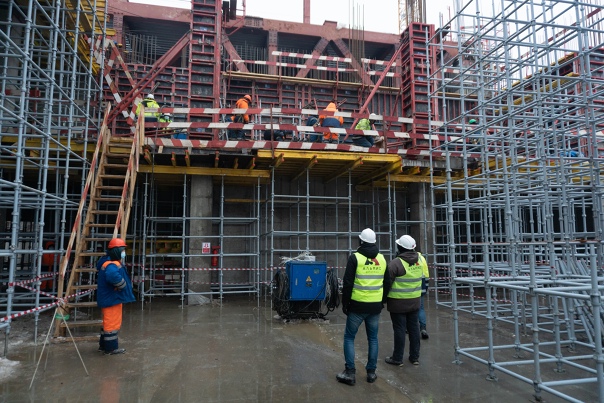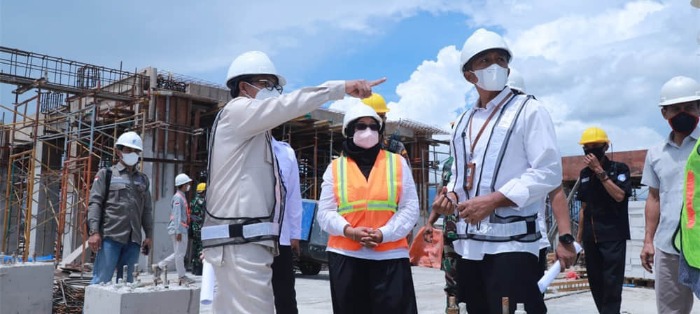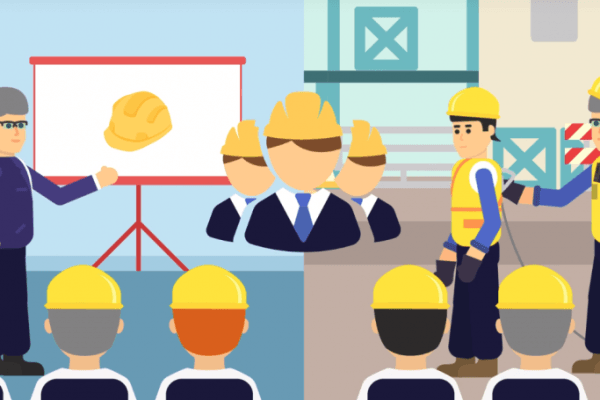Working at height is an inherent part of the construction industry, and scaffolding is an essential tool that enables it. However, the safety of these structures is not a given. Regular inspections are the cornerstone of a safe worksite, ensuring that every scaffold is stable, secure, and ready for use.
For construction managers, site supervisors, and safety officers, understanding scaffold inspection frequency isn't just a best practice—it's a legal obligation. This guide will walk you through the critical moments when a scaffold must be inspected, who is qualified to do it, and why a proactive approach is your best defense against accidents and non-compliance.
When to Inspect: The Three Critical Inspection Points
According to regulations set by bodies like OSHA in the U.S. and the HSE in the UK, scaffold inspections are required at three key times. Missing any of these can put your team at risk and expose your company to severe penalties.
1. Before First Use (Initial Inspection)
A scaffold must be inspected by a competent person after it has been fully erected, altered, or moved, and before it is used for the first time. This initial check is a final verification that the structure was built according to the design plan, manufacturer's specifications, and all relevant safety standards. No one should be allowed on the scaffold until this inspection has been successfully completed and documented.

2. At Regular Intervals (Weekly Inspection)
For any scaffold that remains in use, a formal inspection is legally required at least once every seven days. This weekly check is crucial for monitoring the scaffold's condition over time. A competent person should look for any signs of wear and tear, loose components, or unauthorized alterations that may have occurred during the week. While every seven days is the minimum, daily visual checks by users are also a vital part of maintaining safety.

3. After Specific Events (Special Inspection)
Safety isn't just about a schedule; it's also about being reactive. A scaffold must be immediately re-inspected after any event that could affect its structural integrity. These events include:
- Adverse Weather: High winds, heavy rain, or snow can stress a scaffold's ties and foundations.
- Structural Alterations: If any part of the scaffold is modified, dismantled, or reconfigured, a new inspection is required.
- Accidents or Damage: Any collision with machinery or other unforeseen damage necessitates an immediate inspection to ensure the scaffold is still safe.

The Competent Person's Role
- Qualifications and Training: A competent person should have the necessary qualifications and training to identify potential hazards and ensure the scaffold's safety. Training and experience are crucial to perform inspections effectively.
- Responsibilities and Reporting: Competent persons are responsible for reporting any identified issues and taking appropriate actions to address them. This includes recommending repairs, modifications, or even taking the scaffold out of service if necessary.

Scaffolding Inspection Content
Foundation and support:
- Confirm that the scaffold foundation is in good condition and is neither sunken nor loosely connected.
- Inspect whether the bracketing is installed appropriately, and whether the correct foundation beams and plates are used.
Structural stability:
- Verify that the general structure of the scaffold is safe and that all connections and joints are secure and intact.
- Inspect the vertical and horizontal stability of the scaffolding, whether it tilts in an unintended direction, and for deformation.
Material quality:
- Determine whether the scaffold material meets the standard and has not corroded, been damaged, or deformed.
- Inspect the scaffolding pipes, fixings, and other components to check whether they are broken, bent, or otherwise impaired.
Safety provisions:
- Checking if there are safety measures in place, such as the installation of essential safety features, e.g., safety netting and guardrails.
- Checking the board of the scaffold footing, checking the board is secure and laid level, and if the non-slip surface is applied.
Load Capacity:
- Checking that the scaffold design and erection are in accordance with load requirements and not overloaded.
- Inspecting whether materials or equipment are loaded onto the scaffold to ensure that the loading has been allowed in the scaffold design.
Walkways & access and egress:
- Check if there are clear and safe walkways and access and egress areas on the scaffold, and that these comply with the regulations in place.
- Checking that the walkways, access, and egress areas have non-slip surfaces and are clear.
Electrical services:
- Checking whether there are wires and cabling near the scaffold and if they are protected correctly.
- Checking the scaffold that electrical equipment is installed and that it complies with safety requirements, and that wires are not exposed or damaged.
Scaffold Inspection Report Contents
Project Particulars:
- Name of Project and Project Number
- Date and Time of Inspection
- Inspector’s Name and Position
- Inspection Items and Results
Explain each inspection item and note down the result of the inspection.
Detail the problems and unsafe hidden dangers discovered, stating the specific location and situation.
Corrective Actions:
- List rectification recommendations and actions for the identified problems.
- Record the specific manner in which the rectification actions will be implemented and the person responsible for the actions.
Acceptance Status:
- State the status correctly and re-inspect to confirm the problem has been solved.
- Acceptance personnel sign and verify, documenting the acceptance date and time.
Additional Information:
- Photos and video from the inspection are attached to make the inspection easily comprehensible to the visual audience.
- Any other situations needing clarification and considerations need to be provided or addressed.
Challenges and Common Issues
Addressing obstacles to effective inspections:
- Obstacles to Effective Inspections: Various challenges, such as time constraints, lack of training, and insufficient resources, can hinder effective scaffold inspections. Addressing these challenges is crucial for maintaining safety.
- Addressing Identified Issues: Once issues are identified during inspections, timely action is necessary. Repairing, modifying, or replacing components as needed ensures the scaffold remains safe for use.
Conclusion
Competent scaffold inspections, whether initial, daily, or periodic, play a pivotal role in ensuring workplace safety. The frequency of inspections depends on the type of inspection and the scaffold's use. A competent person's expertise, coupled with compliance with regulations and documentation, fosters a safe working environment where the integrity of scaffolds is preserved.
Read More
Scaffolding Safety Checklist -- SUPREMEPIPE
Guide to Scaffold Inspection and Maintenance -- SAFEWORKAUSTRALIA
Safety Moment | Scaffold Inspection -- YOUTUBE
FAQ
What Is A Scaffolding Inspector?
- Responsible for ensuring that all scaffolding in the construction project complies with prevailing standards, procedures, and laws. Monitor the design and certification of all scaffolding structures on site to meet all relevant specifications and standards.
Why Do We Need To Inspect Scaffolding?
- Scaffolds can collapse due to overloading or instability. Therefore, it is crucial to regularly inspect scaffolds to prevent potential hazards from leading to accidents.
What Is Scaffolding In HSE?
- At its most basic, a scaffold is any temporary elevated or suspended work platform used to support workers and/or materials.



